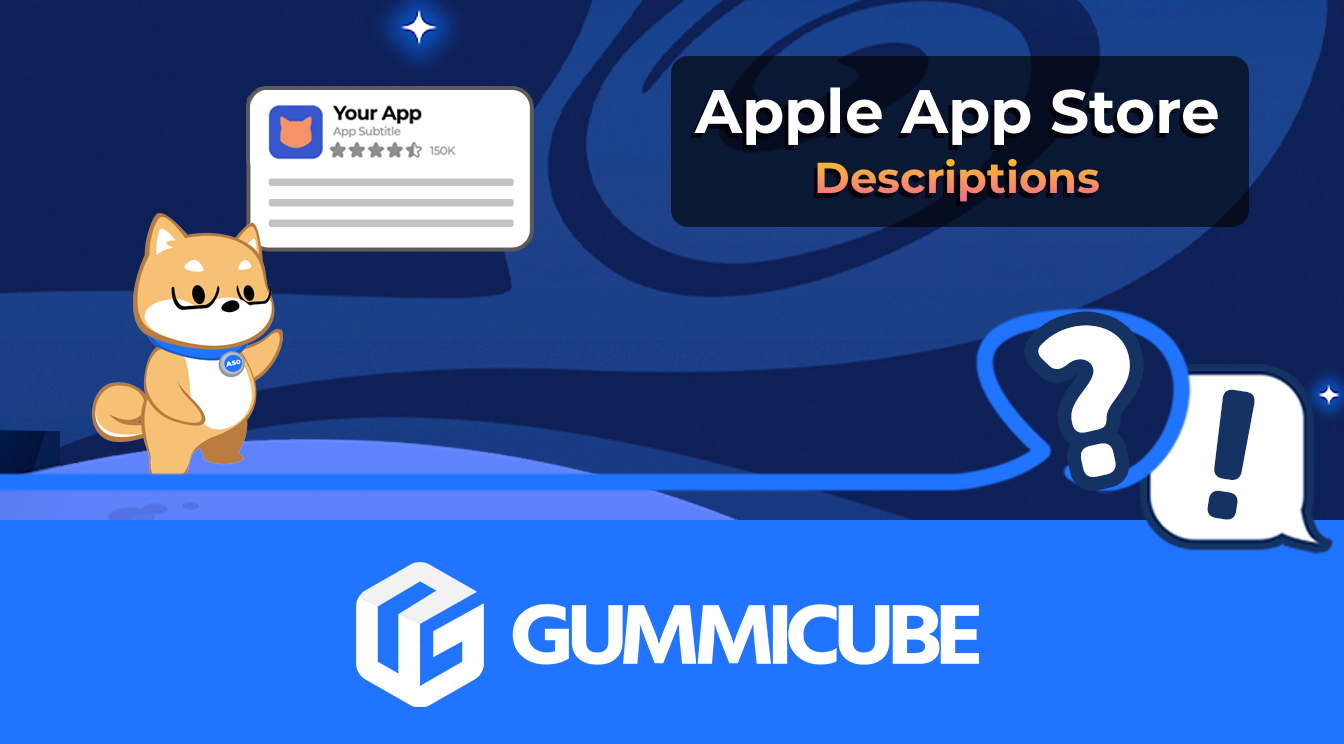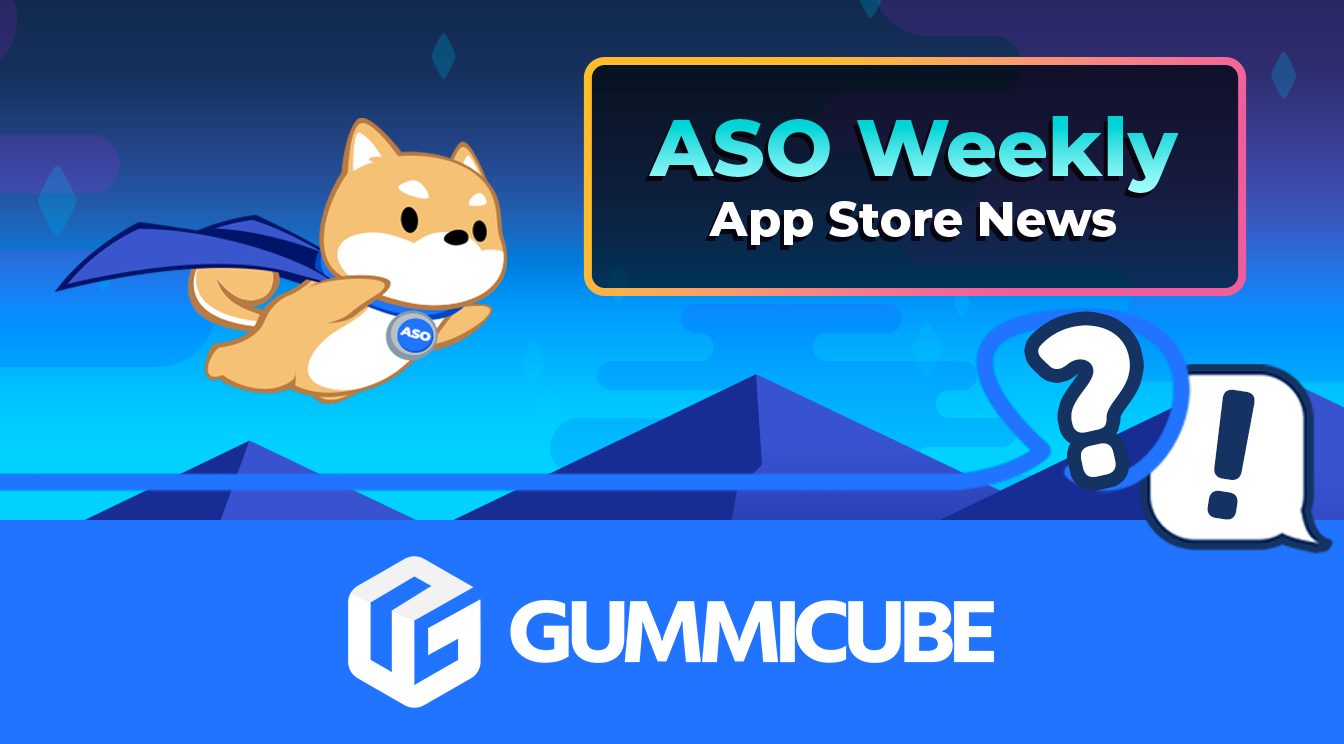
How to Write an Apple App Store Description
Posted on July 17th, 2024
Learn how to approach App Store descriptions the right way so you can effectively engage and convert users.

App Store Optimization is vital to an app’s success, but often times developers and marketers who are new to ASO can have difficulty figuring out where to start. There are many best practices to learn and understand, so what are the key strategies for implementing them? Today we’re looking at some key App Store Optimization strategies that you can use when starting your ASO process.
Basic Metadata Strategies
The first thing you need to think about when starting App Store Optimization is the metadata your app uses. On iOS, this means the title, subtitle, and keyword bank. On Google Play, this means the title, short description and keywords targeted in the long description.
Metadata needs to meet two essential criteria to be included:
Relevancy will make or break your app’s overall discoverability. The first can be determined by looking at what your app is, what it offers and what it can help with. For instance, a dog walking app would want to look at keywords like “dog,” “walking,” “walker,” “pet,” “sitter” and so forth. This would help it index for relevant terms tied to your app’s functionality, like “Dog walker,” “dog sitter,” and “pet sitter”.
This can also include competitor apps and brands, although those can only be included in the hidden keyword; you cannot directly use a competitor’s name in an app’s title, subtitle, short description or long description.
The second requires more research to determine. App Store Intelligence software like DATACUBE can look at mobile search data to determine which terms users are commonly searching for and what the search volume is compared to other, similar keywords.
Using the same dog walking app as an example, a developer can look up the search volume to see if “dog walker” or “walk dogs” has more search volume. In this case, “dog walker” has more volume than “walk dogs,” but that in turn has greater volume than the plural “dog walkers.” This is important information for determining what keywords an app will want to include and target. The higher a keyword’s search volume, the more users will be searching for it so the more potential users it can reach.
This isn’t to say that loading up an app’s metadata with only high volume terms is beneficial. If a term is high volume, but not at all relevant to your app, the likelihood of your app ranking for that term is virtually zero. Understand what your target market is using to search and capitalize on those trends.
Your strategy from there should also involve picking the most valuable keywords that can utilize the full extent of the spaces provided. On iOS apps, this is a 30-character title, 30-character subtitle, and 100-character keyword bank. Try coming up with different combinations of keywords for the title and subtitle that can convey the purpose of the app and appeal to users while using as close to 30 characters each as possible. Then fill the keyword bank with keywords using a total of 99-100 characters, using commas instead of spaces to separate them.
On Google Play, the 50-character title and 80-character short description have the most weight, but other keywords can be included within the long description.
Basic Creative Strategies
Creative sets, including the icon, screenshots and video, are the first thing users see when searching for apps. This makes them particularly important for click through rates and conversions. There are a few important strategies to keep in mind when designing creative sets:
To determine what kind of creatives would work best, competitor research is a great place to start. Look at other apps in your field and identify the effective design choices. See what common themes and elements stand out and what makes them effective. Using the theoretical dog walking app as an example, its developers can check and see how competing apps include dogs in their creative sets and what breeds are most popular, what features they highlight first, how they position the screenshots and so forth. This can inspire its own creative sets.
Text is another vital aspect of creative sets. Proper callout text provides quick and easy to digest information about the purpose and functions of the app at a glance. Each screenshot should be accompanied by 2-3 words, which stand out while matching the design elements of the app. The callout text itself should include keywords – this lets users know the app is directly related to the terms they’re searching for, which can improve conversions.
Developers should also utilize the maximum number of screenshots. The Apple App Store allows up to ten per device, while the Google Play Store has room for eight per device. Each screenshot should be unique and highlight a different feature of the app, so as to provide users with a full understanding of all it has to offer.
Once more using a dog walking app as an example, its screenshots could show off features like finding dog walkers, tracking time and distance, recommended walks for various breeds of dogs, scheduling walks and so on. Each one can include distinct callout text like “Plan your Walk” or “Hire Dog Walkers,” written in friendly font and accompanied by a picture of a happy dog.
Videos are also important parts of creative sets. iOS and Google Play have different rules for their videos, but the important things to remember are:
For instance, the dog walking app we’ve been using as an example can make a Google Play video showing users walking dogs, checking the app to track their walks, and finding dog sitters, cutting between live action and in-app footage. Its video for the iOS App Store, on the other hand, can only show the in-app actions, so it might not be as effective without finding a way to show the actual dogs being walked. In this case, it may want to include a video for Google Play, but not for iOS.
Videos should also highlight the most important features or selling points within the first 3-5 seconds.
Description Strategies
App descriptions are important for providing in-depth information about the app, but there are common misunderstandings about writing descriptions. Many apps feel that an introductory paragraph followed by a single feature list will suffice, then they use that same description on Google Play and the Apple App Store. This is far from optimal.
Users typically scroll through descriptions when they’re on the store, only gathering what information they can see at a glance. Descriptions need to be written with that in mind.
On the Apple App Store, each line should be short and direct. Each part should be no more than two sentences per paragraph, so that users can quickly read it on their iPhone screens as they scroll through the page. The description should still integrate the keywords to indicate to users (and the Apple Search Ads algorithm) that it’s relevant to their queries, but keyword placement is not as important as on Google Play.
On the Google Play Store, keyword placement is of vital importance. Google’s algorithm crawls the description to determine its metadata, so placing additional emphasis on makes it easier for the algorithm to find them.
For both stores, there are a few important things to remember:
Returning to the dog walker app example, it would want to use feature sets like:
Dog Walker Finder
This calls out the app’s feature in the header, then goes into more detail about it for each bullet point. The keyword placement means Google Play’s algorithm would pick it up for keywords like “Dog Walker Finder” and “Hire dog walkers,” while users can quickly see that’s what it’s for as they scroll by.
Paid Marketing Strategies
Paid marketing can give an app a big boost, both in conversions and organic rankings. For iOS apps, this requires Apple Search Ads. For apps on Google Play, it means Google Ads.
These marketing platforms provide two major benefits:
However, an app must already have a strong organic base to build the ads upon. Both Search Ads and Google Ads use an app’s metadata to determine what searches it can bid for and appear in, so an app should target and demonstrate relevance for the keywords it wants. The greater the app’s relevance, the better chances it has of winning the bid for ad spots.
In other words, organic indexation empowers paid growth, which in turn boosts organic growth. It’s a cycle that empowers apps to reach more users through paid marketing and search-based discovery alike.
Developers should therefore choose to target their ads at keywords their app ranks well for as well as those it wants to focus on improving. Begin determining what keywords to bid on when optimizing the app, that way the relevance is already established when it’s time to start bidding. The bids should be balanced for the app’s marketing budget (including setting monthly caps) but the end result can have benefits beyond the initial installs they gain.
Overall
These are a few key strategies for App Store Optimization. Full and in-depth ASO requires research and work, but the end results are well worth it. Remember to choose your metadata carefully, research what creative elements work best, build descriptions that are easy to read while providing valuable information, and invest in paid marketing. With those strategies, your app will be off to a strong start.
Want more information regarding App Store Optimization? Contact Gummicube and we’ll help get your strategy started.

Learn how to approach App Store descriptions the right way so you can effectively engage and convert users.

Learn how to grab your audience's attention through effective and engaging app store preview videos.

Welcome to this week’s ASO Weekly - The App Store halts gambling ads amidst outcry and the Apple takes a bite out of NFT app sales.